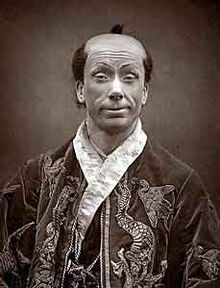In today’s Wall Street Journal drama column I commence my summer travels with a trip to the suburbs of Philadelphia, where I saw a rare and excellent professional revival of Neil Simon’s Biloxi Blues. Here’s an excerpt.
* * *
Neil Simon’s first play, “Come Blow Your Horn,” opened on Broadway in 1961, the year of Tennessee Williams’ “The Night of the Iguana” and Eugène Ionesco’s “Rhinoceros.” Back then and for a long time afterward, it was taken for granted that Mr. Simon was small potatoes by comparison with the giants of his day, a cobbler of flyweight farces for the tourist trade. Thirty years later, though, he won a Pulitzer Prize for “Lost in Yonkers,” which was cited as ”a mature work by an enduring (and often undervalued) American playwright,” and it looked like he’d finally inched his way into the pantheon.
“Lost in Yonkers,” however, was Mr. Simon’s last full-fledged Broadway hit. Nowadays most top regional companies steer clear of his plays, and you won’t find many drama critics who are still willing to make the case for the enduring value of his work….
 Now People’s Light & Theatre Company, one of my favorite East Coast drama troupes, has taken on “Biloxi Blues,” the second panel of the triptych of autobiographical plays (the others are “Brighton Beach Memoirs” and “Broadway Bound”) in which Mr. Simon sought to puzzle out the meaning of his journey from Depression-era scuffling to world-wide celebrity. The original production opened on Broadway in 1985 and ran for 524 performances, but professional stagings have since been increasingly hard to find. This one, directed by Samantha Bellomo, makes a strong case for a play that, despite certain flaws, is both consistently amusing and, like “Lost in Yonkers,” full of unexpected stretches of harsh darkness.
Now People’s Light & Theatre Company, one of my favorite East Coast drama troupes, has taken on “Biloxi Blues,” the second panel of the triptych of autobiographical plays (the others are “Brighton Beach Memoirs” and “Broadway Bound”) in which Mr. Simon sought to puzzle out the meaning of his journey from Depression-era scuffling to world-wide celebrity. The original production opened on Broadway in 1985 and ran for 524 performances, but professional stagings have since been increasingly hard to find. This one, directed by Samantha Bellomo, makes a strong case for a play that, despite certain flaws, is both consistently amusing and, like “Lost in Yonkers,” full of unexpected stretches of harsh darkness.
In “Biloxi Blues,” Eugene Morris Jerome (James Michael Lambert), Mr. Simon’s (barely) fictionalized young alter ego, goes into the Army Air Force in 1943 and is duly dispatched to the fever swamps of Mississippi, there to undergo basic training at the hands of a sergeant (Pete Pryor) who acts tough but turns out to be slightly cracked….
If you’re looking to be entertained, People’s Light’s “Biloxi Blues” will oblige you with room to spare. If you want more, though, you won’t be disappointed….
* * *
Read the whole thing here.
A scene from the 1988 film version of Biloxi Blues, starring Matthew Broderick (who created his role on stage) and Christopher Walken:

 Life’s hardest lessons are often learned most easily when taught with a smile. Crash Davis, the over-the-hill catcher in “Bull Durham,” taught his girlfriend, a believer in reincarnation, a priceless lesson in the vanity of human wishes by asking her this teasing question: “How come in former lifetimes, everybody is someone famous?” George Grossmith, the author of “The Diary of a Nobody,” put his finger on a similarly hard truth—most of us, no matter how well we may think of ourselves, are unimportant to the rest of the world—with equally diverting results.
Life’s hardest lessons are often learned most easily when taught with a smile. Crash Davis, the over-the-hill catcher in “Bull Durham,” taught his girlfriend, a believer in reincarnation, a priceless lesson in the vanity of human wishes by asking her this teasing question: “How come in former lifetimes, everybody is someone famous?” George Grossmith, the author of “The Diary of a Nobody,” put his finger on a similarly hard truth—most of us, no matter how well we may think of ourselves, are unimportant to the rest of the world—with equally diverting results. Grossmith, by the way, was better known in his own time not as a writer but as the D’Oyly Carte Opera Company’s patter-song specialist, in which capacity he created the role of Ko-Ko in Gilbert and Sullivan’s “The Mikado.” He is explicitly portrayed as a morphine addict in “Topsy-Turvy,” Mike Leigh’s 1999 film about the making of “The Mikado,” and the portrayal is based on 19th-century backstage gossip that appears to have been accurate. Because he died in 1912 without making any recordings, we can “know” him only from “Topsy-Turvy” and, far more important, from “The Diary of a Nobody.” It’s a minor masterpiece of satirical comedy, and like many other such masterpieces—as well as, one suspects, its drug-dependent author—it is also very, very sad….
Grossmith, by the way, was better known in his own time not as a writer but as the D’Oyly Carte Opera Company’s patter-song specialist, in which capacity he created the role of Ko-Ko in Gilbert and Sullivan’s “The Mikado.” He is explicitly portrayed as a morphine addict in “Topsy-Turvy,” Mike Leigh’s 1999 film about the making of “The Mikado,” and the portrayal is based on 19th-century backstage gossip that appears to have been accurate. Because he died in 1912 without making any recordings, we can “know” him only from “Topsy-Turvy” and, far more important, from “The Diary of a Nobody.” It’s a minor masterpiece of satirical comedy, and like many other such masterpieces—as well as, one suspects, its drug-dependent author—it is also very, very sad….